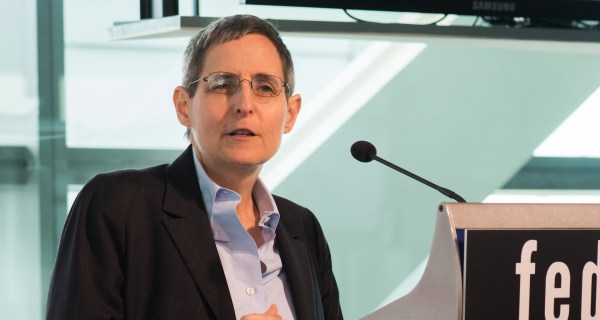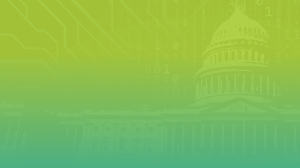 Energy Department CIO Robert Brese announced the American Energy Data Challenge that focuses around energy data and how DOE can best use it. (Photo: FedScoop)
Energy Department CIO Robert Brese announced the American Energy Data Challenge that focuses around energy data and how DOE can best use it. (Photo: FedScoop)Robert Brese, CIO at the Energy Department, announced Nov. 6 the department’s American Energy Data Challenge that includes four phases that center all around energy data and how DOE can best use it.
The goals for this four-part challenge are to introduce the public to the valuable data and resources offered by DOE to solicit feedback about the data, to amplify the energy data available to consumers today under the Green Button Initiative, to create new ways to visualize and discover energy data, and to spur the development of new tools and services that leverage these high-value data sets in ways that benefit citizens.
The first challenge of this series — the Energy Ideas Challenge — seeks new ideas for using energy data to create high-value innovative apps, mission-driven services and insightful knowledge that will contribute to solving real-world issues in the public and private sectors.
The first challenge will be conducted from Nov. 6 through Nov. 29, with a total of $10,000 in prizes being offered. Three additional challenges — Apps for Energy II, Energy Data by Design and the American Energy Challenge — will be rolled out in the coming months, culminating in a call for bold ideas to re-imagine U.S. energy infrastructure.
The challenge announcement came at the Nov. 6 Red Hat Government Symposium hosted by FedScoop at the Newseum in Washington, D.C. Technology leaders from government and the private sector convened at the event to discuss the future of open source.
Brese’s announcement followed a presentation by Kathy Conrad, principal deputy associate administrator in the General Services Administration’s Office of Citizen Services and Innovative Technologies, who said the White House’s open data policy released earlier this year has made open the new default.
That’s apparent in places such as data.gov, which will be getting a new upgrade in a few months, Conrad said, that will be built on an open source platform. She said her office monitors its open source code to see how efficiently it’s being used and that approximately 70 to 75 percent is being reused.
Matthew Burton, deputy CIO at the Consumer Financial Protection Bureau, said CFPB about a year ago posted an source code policy that says whenever the agency uses open source software, it posts its own to share with the public.
“Why do we do it? Because it’s the right thing to do,” Burton said. “We are funded with public dollars, and it’s our duty to give back to the people that fund our mission. The same goes for the government, because when other agencies use our code, we all win.”
Philip Quade, chief operating officer of the information assurance directorate at the National Security Agency, said open source software can reduce upgrade and maintenance costs, the key is getting the procurement side of the house to understand that.
“That will come with time,” he said.
Quade said NSA depends a whole lot on experimentation and the open source model lets the agency reassemble source code in new and different ways to solve different problems facing the agency, both simple and complex.






